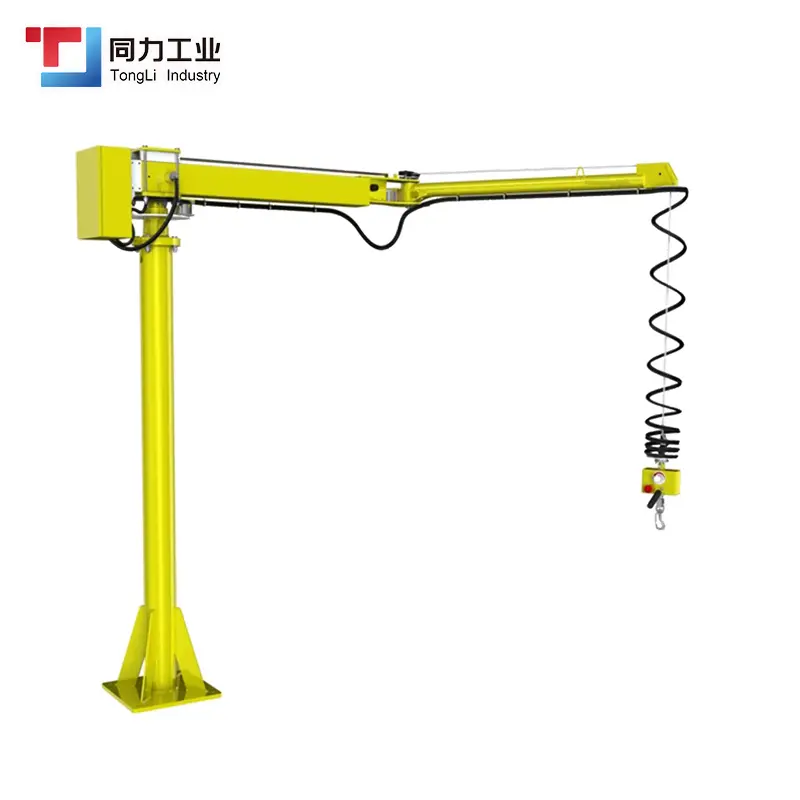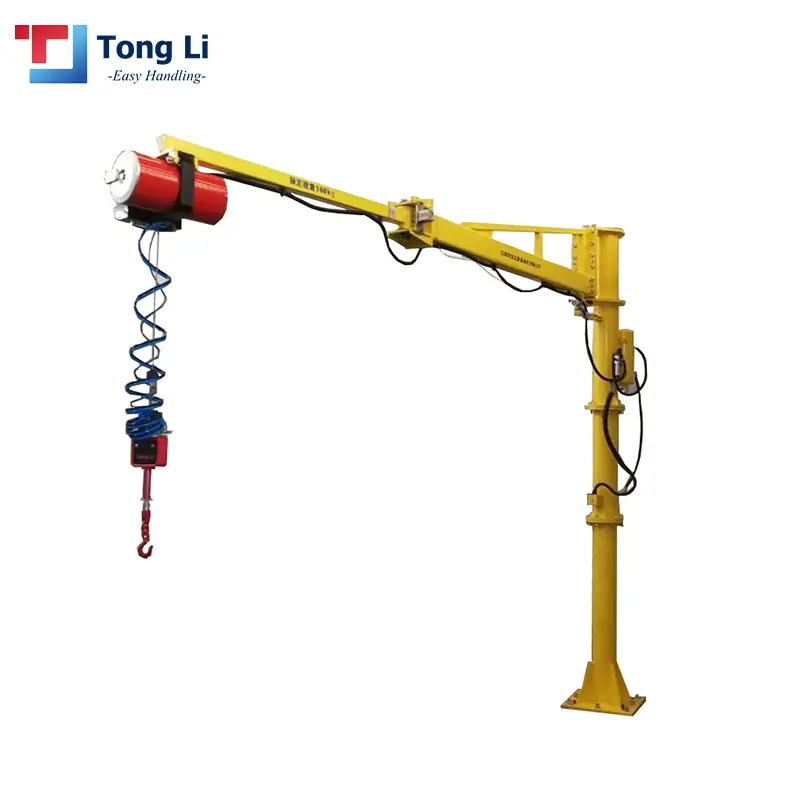The balance crane is an ideal small and medium-sized mechanical lifting equipment.
The balance crane is simple in structure, ingenious in conception, small in volume, light in self-weight, beautiful and generous in shape, safe and reliable in use, light, flexible, simple and convenient in maintenance.
It is more accurate and intuitive than cranes and electric hoists in positioning, occupies little space in the plant, and has no special requirements; it is simpler and more flexible than robots and has strong versatility. Widely used in machine tools on, off the live parts; medium-sized parts of the assembly and repair process lifting transport; assembly line, conversion of the station; casting workshop under the core, the box; heat treatment workshop loading, furnace, etc.. It is a kind of labor-saving tool which is ideal to free the operator from the manual labor of frequent loading and unloading. At present, it is widely used in many industries such as automobile, tractor, diesel engine, agricultural vehicle, machine tool equipment and other machinery manufacturing. The operation of the counterbalance crane is very easy, using the push button to operate the motor to make the hoist lift vertically; manually pushing and pulling the hoist, pendant or directly pushing and pulling the workpiece to make it move horizontally, or rotating around the column to the required lifting position.
In general, many customers are torn between balance cranes and jib cranes, and some even think that these two machines are actually the same, so are they the same? What are the differences?
From the external structure, the jib crane consists of column, swing arm, electric hoist and electric appliance, while the counterbalance crane consists of four-bar structure, horizontal and vertical guide soft seat, oil cylinder and electric appliance. Then they can bear different weights. The jib crane has a load capacity of up to 16 tons, while the counterbalance crane's load capacity is one ton larger.
They operate according to different working principles. The cantilever crane is bolted under the column on a concrete foundation, and the configuration is slowed down with a pendulum pin to facilitate the rotation of the pendulum arm. The electric hoist makes linear movements in all directions on the swing arm I-beam to lift heavy objects; the balance crane is an object suspended from the hook using the principle of mechanical balance, which needs to be supported by hand and can be moved within the lifting height as required to operate the push-button switch, which is mounted on the upper part of the hook and uses the motor and transmission to lift the object.
Users can choose the right crane according to their actual weight and the function of lifting goods, which can save time and manpower to a great extent.
Post time: Apr-01-2022



